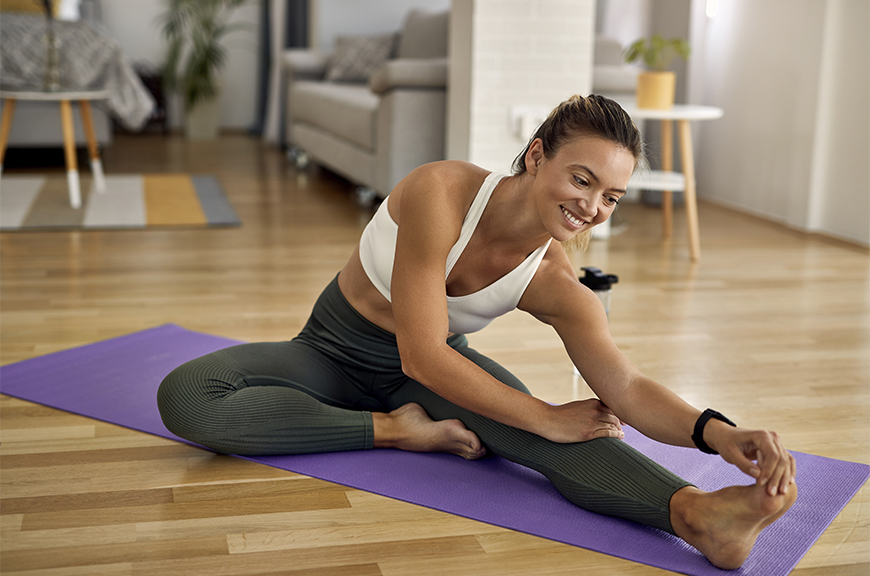
7 Effective Ways to Improve Your Posture
Maintaining good posture can make a difference in how you look and feel. Good body alignment lowers your risk of orthopedic issues, like back and neck pain, but it can also make you feel more confident. In contrast, poor posture can make you feel tired. Many people have poor posture and don’t know it. Let’s look at some ways to “straighten” the problem of poor posture and get your body back in line.
Stretch

Stretching is a way to lengthen the muscles and tendons around your joints. This helps keep them flexible, which helps keep your back straight and prevents you from slouching. Here are some ways stretching improves posture:
- Improving muscle strength and flexibility, which can help you sit straighter with less effort.
- Reducing tension in your muscles, which can help your body feel more relaxed.
- Ensuring you use proper form for each exercise will help you strengthen and tone your muscles more efficiently.
One reason so many people have bad posture is that they sit too much, and their hip flexors tighten and shorten. One way to counter this is to do hip-flexor stretches every day. Here's one to try:
- Lie on your back with both knees bent at 90 degrees and feet flat on the floor in front of you (about shoulder-width apart).
- Lift one knee up toward your chest until you feel a gentle stretch in that hip flexor area.
- Switch legs and repeat.
Bonus: Stretching is a great way to relieve tension in your body, and it can help you feel more relaxed.
Hold Your Chin Up

Practice holding your chin up. This will help keep your spine straight and prevent slouching. Use a mirror to check that you are holding your head straight, or simply look at yourself in the mirror while standing upright. This will help you get a feel for what holding your chin up and maintaining good body alignment feels like.
Don't look down at your screen or phone while working on it. It makes you more likely to slouch over and hunch forward, which can cause pain in the back of the neck and shoulders. Looking down increases the force you place on your neck muscles and can lead to neck pain. Hold your smartphone and devices higher, so you don't have to bend your neck.
Learn to Sit Straight

Most people slouch when they sit and aren't even aware that they're doing it. Do a check-up on your sitting posture:
Your shoulders should be back and relaxed. Imagine someone pulling the shoulder blades together behind your back until you feel them touching each other -- that's the proper position for your shoulders when standing straight.
Your stomach should be slightly pulled in. This will help keep everything aligned properly throughout the day, which can prevent back pain later.
Keep your feet firmly on the floor with your body weight evenly distributed between your feet.
Get An Ergonomic Workstation

Working at a standard desk makes it difficult to maintain healthy posture. You could try to sit straight like a soldier on guard duty while working, but that would probably just make you more tired and uncomfortable over time.
The solution? Get an ergonomic workstation. The name says it all: an ergonomic workstation is built around the idea of working with your body's natural shape rather than against it. This means the height of everything from your monitor to keyboard should be adjustable. If something doesn't fit your body type or current activity level, adjust it until you find what works best for the task at hand!
When typing on a computer keyboard, keep your wrists straight rather than bent downward toward the keyboard, as this may cause repetitive strain injuries like carpal tunnel syndrome.
Train Your Core Muscles

Strong core muscles help you maintain healthy posture and prevent neck and back pain. Your core includes the muscles that stabilize your spine, pelvis, and hips, and includes several groups of muscles: the abdominals, the pelvic floor muscles, and the back muscles. You can strengthen your core muscles through strength training, yoga, or Pilates. If you aren't doing one of these forms of exercise, you won't have a strong core and will be prone to poor body alignment and back pain.
A simple exercise you can do at home to improve your posture is the plank. To do a plank:
- Get into a push-up position with your hands shoulder-width apart on the floor. Keep your legs straight and lift them off the floor.
- Keep your body straight and tighten your abs by pulling your belly button toward your spine. Hold this position for 30 seconds or more (if you can).
- Do this exercise once or twice per day every day to build core strength over time.
Take Walking and Stretching Breaks

Take a break every 20 minutes to stretch and walk around if you sit at a desk all day. When taking breaks throughout the day (whether they're planned or unplanned), it's important they be long enough so that you can properly stretch your spine and give yourself time away from the office chair. A good way to ensure you're consistent is to use the alarm clock app on your phone. The alarm will remind you when it's time for another break. During your breaks, walk around and stretch your upper body. If possible, get outside for a few minutes.
Be Aware of Your Posture

Your posture is something you should always be aware of. It's easy to fall into bad habits that can cause pain and discomfort in the future, so it's important to pay attention to how you hold yourself throughout the day. Do a posture check or have someone knowledgeable critique your posture when you sit or stand. Another option is to have someone videotape you as you sit at your desk, stand, and walk. Awareness is power so consider making these changes to improve your overall health.


